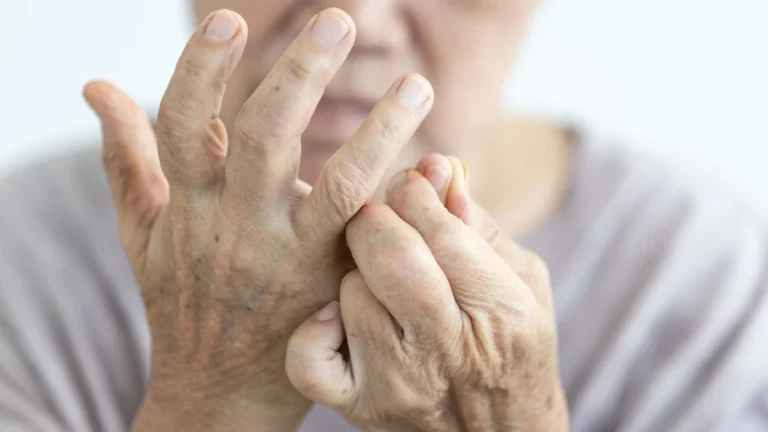Essential Guide to Rheumatoid Arthritis in Young Adults: Overcoming Challenges
If you think rheumatoid arthritis in young adults sounds like a contradiction, you’re definitely not alone. I’ve had more than a few patients look at me in disbelief when I bring up RA as a possible diagnosis—especially those in their 20s and 30s. Most folks picture their grandparents when they hear the word “arthritis”, not themselves in the middle of building a career or starting a family. But as someone who’s worked closely with young adults navigating this condition, I can tell you firsthand: RA doesn’t check your birth year before it barges in.
What Is Rheumatoid Arthritis, Really?

Let’s cut through the medical jargon. Rheumatoid arthritis (RA) is an autoimmune disease. That means your body’s immune system, which is supposed to protect you, gets a little confused and starts attacking healthy tissue—in this case, the lining of your joints. Over time, that can lead to chronic pain, stiffness, swelling, and even joint damage.
RA is not caused by wear and tear like osteoarthritis. It’s inflammatory, and it can affect everything from your eyes and lungs to your skin and heart. Sounds scary, right? But here’s the thing—it’s also manageable, especially when caught early. And catching it early is where people like me—rheumatology nurse practitioners—come in.
Why Young Adults Shouldn’t Shrug Off the Symptoms

It’s Not Just “Growing Pains”
I can’t tell you how many young patients assume their symptoms are just a result of working out too hard, being on their feet too long, or stress. And sure, that could be true in some cases. But if you’re waking up with stiff joints that take longer than 30 minutes to loosen up, or you’ve got pain in both wrists, hands, or knees that just doesn’t seem to go away—it’s time to talk to someone. Preferably a provider who gets that RA doesn’t care if you’re 26 or 66.
Common Early Signs of RA in Young Adults
- Persistent fatigue (not just the “I need coffee” kind)
- Morning stiffness that lasts longer than an hour
- Swollen, tender joints—often symmetrical
- Low-grade fever
- Unexplained weight loss
One of my younger patients, a graphic designer in her late twenties, came in thinking she had carpal tunnel. Turns out, it was early-onset RA. She was stunned—then relieved to finally get answers and start treatment that changed everything for her.
Living with Rheumatoid Arthritis in Your 20s and 30s

How It Affects More Than Just Your Joints
When you’re young, RA can feel like it’s stealing your independence. Maybe you’re used to going full speed all day, juggling work, workouts, and weekend plans. Suddenly, you’re dealing with fatigue that won’t quit, wrists that ache when you type, and knees that throb after walking a few blocks. I’ve watched patients grieve their old routines. That’s real. That matters. But I’ve also watched them build new routines—ones that honor their limits without giving up on their goals.
The Emotional Toll Is Real
There’s also a mental and emotional layer to this disease that doesn’t get talked about enough. Chronic illness can feel isolating, especially when your peers can’t relate. One of the most powerful things you can do is connect with others going through the same thing. Whether it’s online communities, support groups, or just talking to someone who gets it—it makes a difference.
From one healthcare professional to another (and to anyone reading this trying to make sense of a new diagnosis), I want you to know this: RA in young adults is real, it’s challenging, but it’s absolutely something you can manage. You just need the right team, a solid plan, and a whole lot of self-compassion.
How Is Rheumatoid Arthritis in Young Adults Diagnosed?

This part can honestly feel like the longest and most frustrating stretch. I’ve seen young adults bounce between specialists for months because RA isn’t always easy to pin down early on. The symptoms can be vague, overlap with other conditions, and often get brushed off—especially in younger folks. It’s not uncommon for someone to be misdiagnosed with tendonitis, repetitive strain injury, or even just anxiety-related pain before RA is even considered.
Testing Isn’t Always Clear-Cut
There’s no single test that gives a guaranteed “yes” or “no” for RA. Instead, diagnosis is like putting together a puzzle. Here’s what we usually look at:
- Blood tests – These check for markers like rheumatoid factor (RF), anti-CCP antibodies, ESR, and CRP. But here’s the kicker: not everyone with RA tests positive.
- Imaging – X-rays, ultrasounds, or MRIs can help show early joint changes and inflammation.
- Symptom history – This is huge. As a rheumatology NP, I always take time to hear the full story—when symptoms started, what worsens them, how they impact daily life.
Sometimes, the official diagnosis takes a little while to nail down, especially if your bloodwork comes back looking “normal.” I’ve had a few patients tell me they felt gaslit by previous providers—like it was all in their head. That’s why it’s so important to advocate for yourself, or have someone like me in your corner who knows what red flags to look for in young adults.
What Treatment Really Looks Like (Hint: It’s Not One-Size-Fits-All)

Once we’ve got a diagnosis, the next step is building a treatment plan—and this part’s where things start to feel hopeful. I always tell patients, “Yes, RA is serious, but it’s also treatable.” The goal? Get the inflammation under control and prevent long-term joint damage. And in young adults, that means finding a balance that fits your lifestyle without putting your dreams on hold.
Types of Treatment You Might See
- DMARDs (Disease-Modifying Anti-Rheumatic Drugs) – These slow the progression of RA. Methotrexate is the most common first-line option.
- Biologics and Targeted Therapies – These are more advanced meds that work on specific parts of the immune system. Think Enbrel, Humira, or Rinvoq.
- NSAIDs and Steroids – These help manage flare-ups and inflammation short-term but aren’t ideal for long-term use.
When I sit down with patients, especially those new to RA, I walk them through the pros and cons of each medication. We talk side effects, how it fits their daily life, and whether they’re planning a family in the near future. (Some of these meds aren’t pregnancy-safe, so timing matters!) It’s not just about what the textbook says—it’s about what works for you, today and long-term.
Managing RA Beyond the Prescription Pad

Let’s Talk Lifestyle Changes
I’ve had patients completely shocked when I tell them that things like sleep, stress, diet, and movement can impact their RA symptoms just as much as meds sometimes. No, you don’t have to live on kale and turmeric lattes—but paying attention to the basics helps. Here’s what I recommend:
- Exercise smart – Gentle movement like swimming, yoga, or walking can actually reduce stiffness and pain. One of my patients swears by morning stretches and foam rolling—it changed the game for her.
- Anti-inflammatory eating – You don’t need to go full paleo or plant-based, but cutting back on processed foods and sugar can help reduce flares.
- Sleep is medicine – Aim for 7–9 hours. Easier said than done, I know—but when you’re rested, your body can fight inflammation better.
- Stress less (or try to) – Chronic stress fuels inflammation. Even five minutes of deep breathing or journaling can help lower cortisol levels.
Real Talk: Flares Will Happen
Even with the best plan in the world, flares are part of the deal. One of my regulars—she’s in law school—tells me she can “feel it coming” in her wrists when she’s overloaded with deadlines and not sleeping well. We’ve learned to spot those patterns and adjust early, whether that means tweaking meds or simply building in more rest.
Learning your own triggers, building a flexible routine, and giving yourself grace during flares—those are just as important as any pill or injection. And as a nurse practitioner, I always make sure patients feel supported through those ups and downs, not just during appointments.
Building Your Support Network: Why You Don’t Have to Go It Alone

One of the biggest lessons I’ve learned as a rheumatology nurse practitioner is how important it is for young adults with RA to have a strong support system. When you’re juggling doctor visits, medication schedules, and unpredictable flare-ups, having people who truly understand what you’re going through can be a game-changer.
Finding Your Tribe
Support doesn’t have to mean just family or close friends—though those relationships are vital. It can also mean connecting with others living with RA, either locally or online. I often recommend my patients check out support groups or forums because hearing other people’s stories helps reduce the feeling of isolation.
Personally, I’ve seen how much belonging to a community where people share tips, vent frustrations, or celebrate small victories can boost mental health and even improve how patients manage their symptoms. For example, one of my young patients told me she found a local RA support group through social media, and that group became her lifeline during a rough patch.
Professional Help Is Part of Your Team, Too
Aside from medical treatment, don’t underestimate the value of therapists, occupational therapists, and nutritionists. Living with a chronic illness like RA means adjusting not just physically but emotionally. Therapy can provide tools for coping with stress, anxiety, or depression, which are common in chronic illness but often overlooked.
Occupational therapists can help you find ways to protect your joints during daily tasks, reducing strain and preventing further damage. And a nutritionist can tailor an anti-inflammatory diet that suits your lifestyle and preferences—making it easier to stick with healthy habits.
Looking Ahead: Living Well with Rheumatoid Arthritis in Young Adulthood

RA is a marathon, not a sprint. And if there’s one thing I want young adults to hear loud and clear, it’s this: you can live a full, active, and meaningful life with rheumatoid arthritis. I’ve seen it happen time and time again—patients going on to build careers, raise families, and pursue passions despite the diagnosis.
Stay Informed and Be Your Own Advocate
Medical knowledge is always evolving. What we know about RA today might change next year. That’s why staying informed and involved in your care is crucial. Don’t hesitate to ask questions, seek second opinions if something doesn’t feel right, and be open about how your symptoms affect you.
As someone who has been on both sides—patient education and clinical care—I can tell you that advocacy is powerful. The more you understand your condition, the better you can work with your healthcare team to find treatments and strategies that fit your life.
Practical Tips for Long-Term Wellness
- Keep regular check-ups: Even when you feel good, routine visits help catch changes early.
- Listen to your body: Rest when you need it, but don’t give up on movement.
- Maintain a healthy lifestyle: Balanced nutrition, good sleep, and stress management are pillars of managing RA.
- Lean on your support network: Whether it’s family, friends, or fellow RA warriors, connection matters.
- Celebrate small wins: Whether it’s a pain-free morning or managing a flare without panic, give yourself credit.
Living with rheumatoid arthritis in young adulthood isn’t easy, but it’s far from hopeless. With the right care, mindset, and support, you can navigate this journey with resilience and even a sense of empowerment.
References
Disclaimer
This article is intended for informational purposes only and should not replace professional medical advice, diagnosis, or treatment. Always consult your healthcare provider with any questions you may have regarding a medical condition or treatment options.

Tarra Nugroho is a dedicated Nurse Practitioner with a strong foundation in family and preventive care. She brings both compassion and clinical expertise to her practice, focusing on patient-centered care and health education. As a contributor to Healthusias.com, Tarra translates medical knowledge into clear, empowering articles on topics like women’s health, chronic disease management, and lifestyle medicine. Her mission is simple: help people feel seen, heard, and informed—both in the clinic and through the content she creates. When she’s not caring for patients, Tarra enjoys weekend hikes, plant-based cooking, and curling up with a good health podcast.






